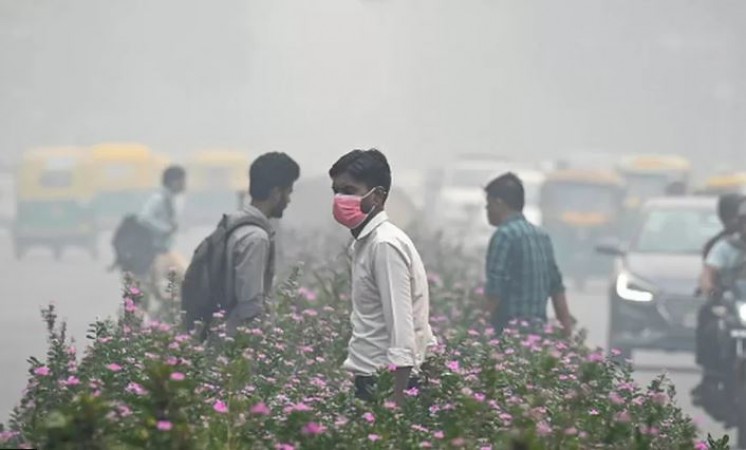
New Delhi: Delhi's air quality has once again deteriorated, plummeting into the 'severe plus' category, making the national capital the most polluted city in the country. Real-time Air Quality Index (AQI) readings have soared above 500 in various parts of the city. At noon, the Wazirpur monitoring station in Delhi reported an alarming AQI level of 859.
PM2.5 Levels Exceed WHO Guidelines
The PM2.5 concentration level in Delhi currently stands at 96.2 times the World Health Organization's (WHO) air quality guidelines. PM2.5, or Particulate Matter 2.5, consists of fine, inhalable particles with diameters typically measuring 2.5 micrometres or smaller. These pollutants are so minuscule that they can enter the bloodstream, leading to adverse health impacts.
PM10 Predominant Pollutant
PM10, or Particulate Matter 10, with diameters of 10 microns or smaller, is the primary pollutant in Delhi and its neighboring cities. All air quality monitoring stations across Delhi have reported PM2.5 levels exceeding 450 µg/m³.
Factors Contributing to the Pollution
Several factors contribute to Delhi's worsening air quality. Stubble burning in Punjab and Haryana is a significant factor, alongside Delhi-NCR's vehicular and industrial pollution. Correlating the spike in AQI with Punjab farm fires, NASA's Worldview satellite recorded stubble-burning incidents between October 25 and 29.
Despite the rising trend this season, there has been a 57 percent decline in farm fires between September 15 and October 29 compared to the previous year. The Centre has implemented stage 3 measures to curb air pollution, including banning construction work in areas with AQI over 400.
Vehicular Emissions and Low Wind Speed
Vehicular emissions and low wind speed further exacerbate the problem. According to IQAir, Delhi's current wind speed at 1:30 pm was reported at 7.4 km/hr. Higher wind speeds are crucial for dispersing pollutants.
Severe Health Impacts
The AQI has remained over 500 for the fourth consecutive day, posing severe health risks to all age groups, including fetuses. Breathing the current air quality is equivalent to smoking 25-30 cigarettes, experts warn.
The health impacts of such extreme pollution levels affect every organ in the body. There is evidence to suggest that air pollution contributes to obesity and asthma. According to the European Environment Agency (EEA), both short-term and long-term exposure to air pollution can lead to a wide range of diseases, including stroke, chronic obstructive pulmonary disease, various cancers, asthma aggravation, and lower respiratory infections. The situation underscores the urgent need for effective measures to combat air pollution and protect public health.
PM Narendra Modi Visits Maa Bamleshwari Temple in Chhattisgarh's Rajnandgaon
BJP Unveils 15 More Candidates for Rajasthan Polls - 198 Out of 200 Declared
Looting for Literally 'Concrete' Reasons: Bihar's Road Bandits